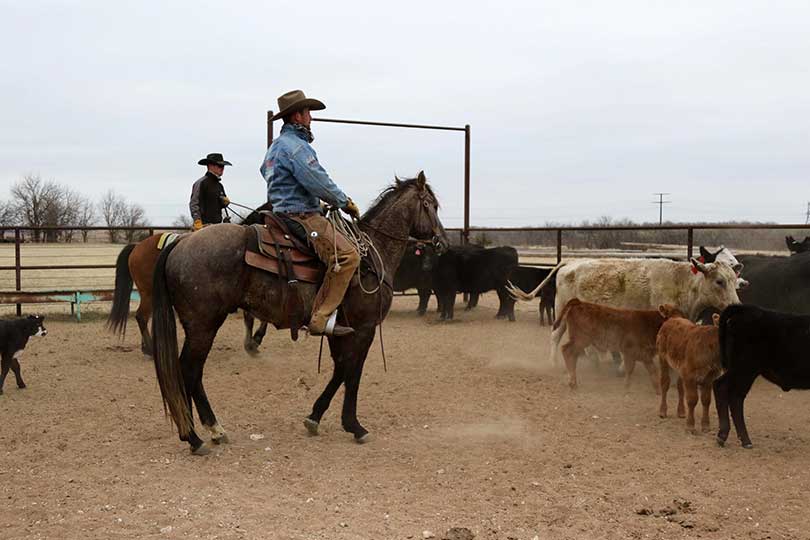Kansas State Research and Extension beef veterinarian A.J. Tarpoff offers tips on how to care for livestock after the wildfires.
Orphaned calves will need extra care and attention, Tarpoff said.
“Fostering or grafting these calves onto another mother is our best bet, but we may not have that option,” Tarpoff told Southwest Farm Press. “The next step is turning them into bucket calves.”
There are milk replacement formula guidelines that ranchers need to follow. He recommends the 20-20 rule—20 percent crude protein and 20 percent crude fat.
Calves also need access to clean, quality water at all times. They can be transitioned to a starter feed relatively soon.
He said ranchers should offer starter feeds relatively early on, at every feeding and let the calf make the decision.
“Once they’re consuming two to three pounds a day of the starter feed for two to three days in a row, we can wean them off the milk replacement, and transition them straight onto the calf starter feed,” Tarpoff said.
He said the first concern is the hooves for all calves, heifers, cows and bulls that sustained injuries in the fire. Hooves and feet may appear normal now but could succumb to latent damage.
“Initially, from the high temperatures of the fire, we saw some separation and cracking in what’s called the coronary band—that’s where the hoof transitions to the skin, where the hair starts,” Tarpoff said.
He said even slight damage initiated during the fire can turn into severe laminitis.
The tender new skin underneath the burned skin will be at risk of secondary bacterial infections.
“I would highly recommend working with local veterinarians. They may have access to certain types of burn cream that can be used for some of these tender areas.”
He said bulls should be checked and tested to be sure they are fit for the upcoming breeding season.
The effects and damage from heat and smoke inhalation could cause the most long-term issues in cattle.
“It will take at least a month for the animal to fully heal from that kind of injury, and we’ll need to monitor that progress,” Tarpoff said.
He said ranchers should ask for help, and there are antibiotics and respiratory drugs available to help these animals heal from respiratory diseases and conditions.
“There’s a lot of people donating their time, their efforts, their feed…a lot of people working together to make sure that we get back going as soon as we can, and the veterinary community is standing ready to help,” Tarpoff said.

